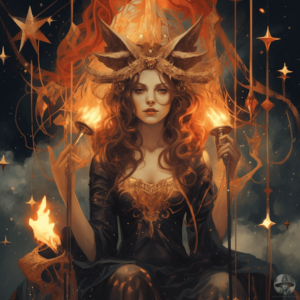
Introduction
There is probably no other Pagan culture which generates as much interest—or argument—as that of the many varied traditions of the Celtic people. The Celts, a group of tribes with interconnected languages and cultures, have been a subject of fascination and scholarly research for centuries. Their enigmatic history, ancient rituals, and vibrant mythology continue to capture the imagination of historians, Pagans, and enthusiasts alike. It's not just the mystical allure, but also the profound depth and intricacies within the Celtic customs and beliefs that make this culture a wellspring of endless exploration.
However, as one delves into the study of Celtic Paganism, it becomes apparent that numerous books, both scholarly and esoteric, claim to comprehensively cover the subject. These sources, often in an attempt to decode the past, present a plethora of perspectives. This results in a landscape where the information is abundant but often disparate. The plethora of literature can be both enlightening and overwhelming, often leading to passionate discussions and debates among scholars and enthusiasts. Such debates encompass various aspects of Celtic culture, from religious practices and mythological tales to historical events and artistic expressions. The abundance of views and interpretations is reflective of the complexities and richness of the culture itself.
Additionally, it is important to tread with caution and an open mind. The ancient Celtic civilization, though renowned for its mythology and art, was not particularly inclined towards record-keeping in the way modern societies understand it. Therefore, much of what is known about the Celts is pieced together through archeology, secondary Roman and Greek sources, and, of course, the marvelous myths and stories that have been passed down through generations. This means that much of what we understand about these ancient people is based on supposition, conjecture, and educated guessing. As we embark on this journey through the captivating world of Celtic Paganism, it's crucial to maintain a sense of curiosity tempered with discernment, and to remember that sometimes the beauty of the Celts lies as much in the mystery as it does in the known.
--Note--
As the author and your guide through this enchanting realm of Celtic Pagan culture, I have lovingly gathered and sifted through information, like a treasure hunter unearthing ancient gems. My heart is set on sharing these wondrous discoveries with you in the warm embrace of this website. Picture this space as a cozy nook where history and mystery interweave, and where each of us is both a learner and a storyteller. Our journey is akin to opening a book of ancient tales where every page whispers secrets of old. And what’s more delightful is that this book never ends! With the constant flow of new discoveries and insights, our tapestry of knowledge will keep growing richer. I extend a heartfelt invitation for you to join in the discussion – bring your cup of tea, your questions, and your sense of wonder. Let’s kindle our imaginations together, as we set sail on an adventure through time, unlocking the secrets of the Celtic lands and the mystique of their Pagan traditions. Welcome aboard!HISTORY AND INTERPRETATION
History is not an exact science, and this is especially true in Celtic history. The role of historians is to interpret what has happened, and why and how it occurred, based on the facts that are available. Each new generation of historians takes the work that came before, looks at it with fresh eyes, and attempts to reinterpret the prevailing attitudes and concepts. In Celtic history, this is particularly true. There has been much disagreement between scholars on when the Celtic invasion reached Britain.
While the most generally accepted date for the Celtic arrival in Britain is around 800 BCE, some believe the Celts began arriving as early as 1500-1200 BCE. A more conservative viewpoint suggests they did not show up until around 600-500 BCE. Previously, it was widely believed that the Celts arrived mostly in one large group and essentially “conquered” their island home. However, recent archaeological and anthropological evidence suggests that the Celts most likely migrated in small waves over several hundred years. In this sense, Celtic culture slowly inundated the island and in that way conquered the land.
Additionally, the Celtic presence in Europe can be traced back to much earlier periods, around 1800 BCE. They initially dominated regions such as modern-day southern Germany and Gaul. They were formidable in battle and waged wars on neighboring countries. By the time the Roman Empire began to expand, the Celts had already established a strong presence in various regions across Europe.
The Celts were also skilled artisans, particularly in metalwork, and were known for their intricate designs and craftsmanship. Their art evolved over time, with early examples dating back to around the 8th century BCE. The La Tène style, which emerged around the 5th century BCE, is often associated with the Celts and is known for its ornate and elaborate designs, often incorporating swirling patterns and animal motifs.
In terms of spiritual life, the Celts were animistic and polytheistic. They believed in the presence of spirits in nature and revered a pantheon of deities. Around the second century BCE, Druidism emerged as a prominent religious practice among the Celts. The Druids, a male-dominated priestly class, played a significant role in Celtic society. Not just religious leaders, Druids were also scholars, judges, and advisors to the kings. They valued knowledge and education, and it is believed that they memorized vast amounts of information, including history, law, and poetry, which they passed down orally.
One of the most well-documented aspects of Celtic spiritual life is their celebration of seasonal festivals. The most famous among these are Samhain, which marked the end of the harvest season and the beginning of winter, and Beltane, which celebrated the beginning of the warmer season. These festivals were deeply connected to the cycles of nature and agricultural practices.
The decline of Celtic culture started around the 1st century BCE with the expansion of the Roman Empire, and later the spread of Christianity. Despite these external pressures, elements of Celtic culture managed to survive, especially in regions like Ireland and Scotland.
With the complexities and enigmatic nature of Celtic history, it is no wonder that scholars continue to dissect and reinterpret the available information. As we move forward, new discoveries and insights will undoubtedly shape our understanding of this captivating culture. Through a lens of curiosity and respect, the legacy of the Celts continues to enrich the tapestry of human history.
MYTH VS HISTORY
When it comes to the enigmatic Celtic culture, one of the most treasured gifts they have left behind is their rich tapestry of myths. Especially for those intrigued by Pagan traditions, delving into Celtic mythology offers an avenue to understand and connect with a spiritual legacy. However, it is essential to recognize the interplay between history and mythology, and how each influences the other. As J. Kent Calder, managing editor of Traces, the official publication of the Indiana Historical Society, articulates, “the two [myth and history] are so thoroughly intermingled that only the most skeptical and diligent can keep them separated for long.” For Pagans, this intermingling need not be untangled entirely, but rather appreciated and comprehended enough to make it a part of their spiritual practice.
Now, what exactly are myths? Myths encompass a collection of traditional stories, lore, and beliefs that shape a culture’s cosmology and religious outlook. It is vital to understand that the term “myth” does not imply falsehood. In fact, myths can be seen as living entities that evolve with time. Eminent mythologist Joseph Campbell viewed myths as responsive and adaptable elements that change with the cultural context. Celtic myths are no exception – some recount real events and historical figures, others are imaginative tales, and many are an intricate blend of reality and fantasy.
Furthermore, the versions of Celtic myths that have reached us today were primarily documented by Christian monks between 600-900 CE. By that time, the Celtic regions had been significantly influenced by various cultures including the Danes, Vikings, Romans, Normans, and Saxons. Each of these cultures left an indelible mark on Celtic traditions. It's essential to consider that the transcribed myths might not have been immune to alterations. However, the essence of the myths likely remained intact despite the changes, though the version written was likely one among many that existed orally.
It’s important to consider that oral traditions, like those that thrived among the Celts for generations, were dynamic. They adapted and transformed with the cultural milieu. The ancient myths were malleable and mirrored the ever-changing facets of society. As Sir John Rhys, a mythologist from the turn of the century, stated, “A mythology must always be far older than the oldest verses and stories that celebrate it.”
For instance, the Celtic myths hint at the practices of human and animal sacrifice as part of their religious ethos. As modern Pagans, understanding the cultural and historical context behind these rituals can facilitate the adaptation of these myths into contemporary practices in more constructive and ethical ways. Similarly, the portrayal of deities with human-like traits in Celtic myths suggests a personalized relationship with the divine, an aspect that continues to resonate with spiritual practitioners.
In essence, mythology serves as a gateway to the heart of a culture's values, perceptions, and beliefs. Through the myths of the Celts, one can gain insights into their worldview, social roles, spiritual practices, and relationships with deities. For instance, the significance of cattle deities in Celtic mythology underscores the value placed on livestock in their predominantly pastoral society. Through a discerning exploration of these myths, one can also discover practical ways to connect with the energies of these deities and incorporate them into modern spiritual practices.
In conclusion, mythology, perhaps even more than history, is a lens through which the soul of the Celtic culture can be glimpsed. It is a rich resource for those who wish to reconstruct elements of the Old Religion and seek insights into a world that has faded into the mists of time. Through the myths, we can learn and evolve, forging intimate bonds with the vibrant tapestry of characters and deities, and in doing so, keep the spirit of Celtic culture alive.
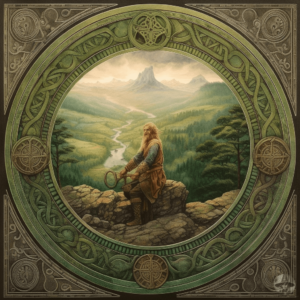

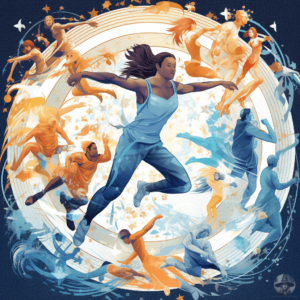
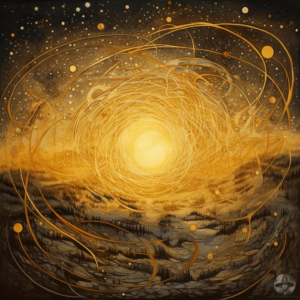
 Good Morning, Cosmic Travelers!
Good Morning, Cosmic Travelers!


 ARIES (March 21-April 20)
ARIES (March 21-April 20) Love Focus: Wedding bells? Could be you!
Love Focus: Wedding bells? Could be you! Lucky Number: 3 - Embrace creativity & express yourself.
Lucky Number: 3 - Embrace creativity & express yourself. Lucky Color: Cream - Purity and new beginnings.
Lucky Color: Cream - Purity and new beginnings. TAURUS (April 21-May 20)
TAURUS (April 21-May 20) GEMINI (May 21-June 21)
GEMINI (May 21-June 21) CANCER (June 22-July 22)
CANCER (June 22-July 22) VIRGO (August 24-September 23)
VIRGO (August 24-September 23) LIBRA (September 24-October 23)
LIBRA (September 24-October 23) SCORPIO (October 24-November 22)
SCORPIO (October 24-November 22) SAGITTARIUS (November 23-December 21)
SAGITTARIUS (November 23-December 21) CAPRICORN (December 22-January 20)
CAPRICORN (December 22-January 20) AQUARIUS (January 21-February 18)
AQUARIUS (January 21-February 18) PISCES (February 19-March 20)
PISCES (February 19-March 20) Remember Cosmic Travelers, the universe is vast and full of wonders. Take everything with a pinch of stardust and make the most of your day!
Remember Cosmic Travelers, the universe is vast and full of wonders. Take everything with a pinch of stardust and make the most of your day! 
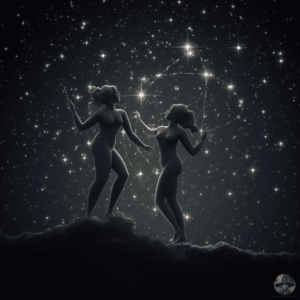
 Mercury's Sojourn in Gemini: Unleash a Wave of Articulation and Inspiration
Mercury's Sojourn in Gemini: Unleash a Wave of Articulation and Inspiration
 Aries, the torrent of mental activity could lead you down a path of impetuosity. Take a deep breath, weigh your words, and navigate with wisdom to bypass rushed decisions or heated debates. Seize this transit as an open invitation to venture into unknown territories and amass fresh skills.
Aries, the torrent of mental activity could lead you down a path of impetuosity. Take a deep breath, weigh your words, and navigate with wisdom to bypass rushed decisions or heated debates. Seize this transit as an open invitation to venture into unknown territories and amass fresh skills. Taurus, your intellectual acuity is on an upward trajectory, setting the stage for sharp financial discernment and choices. Pour your energies into budgeting, exploring novel income streams, and astute financial planning. Polish your communication skills as well.
Taurus, your intellectual acuity is on an upward trajectory, setting the stage for sharp financial discernment and choices. Pour your energies into budgeting, exploring novel income streams, and astute financial planning. Polish your communication skills as well. Gemini, express your thoughts with grace and sureness. Your innate curiosity will reach new heights, encouraging you to dive headfirst into an ocean of knowledge. Use this transit to adopt a flexible outlook on life, embracing change with open arms.
Gemini, express your thoughts with grace and sureness. Your innate curiosity will reach new heights, encouraging you to dive headfirst into an ocean of knowledge. Use this transit to adopt a flexible outlook on life, embracing change with open arms. Cancer, the transit is whispering an invitation to delve deep within and face long-concealed emotions. Seek solace in introspection, meditation, or therapy during this period, as you begin to unpeel the layers of your psyche. You may find it challenging to articulate your innermost feelings, preferring to keep your emotions under wraps. Explore your artistic side to express yourself.
Cancer, the transit is whispering an invitation to delve deep within and face long-concealed emotions. Seek solace in introspection, meditation, or therapy during this period, as you begin to unpeel the layers of your psyche. You may find it challenging to articulate your innermost feelings, preferring to keep your emotions under wraps. Explore your artistic side to express yourself. Attention, Virgo! Your mind's laser-sharp focus and analytical prowess are at an all-time high. Step into your power, streamline tasks, and rise like a star in your career. Just remember to keep that Virgo charm on, and present yourself as the expert you were born to be. This is your time to shine!
Attention, Virgo! Your mind's laser-sharp focus and analytical prowess are at an all-time high. Step into your power, streamline tasks, and rise like a star in your career. Just remember to keep that Virgo charm on, and present yourself as the expert you were born to be. This is your time to shine! Libra, pack your metaphorical bags for a journey through realms of wisdom! Whether you enroll in a captivating course, take up a new hobby, or set off on a literal journey, this transit urges you to spread your wings. However, be wary of getting too set in your beliefs; keep an open mind.
Libra, pack your metaphorical bags for a journey through realms of wisdom! Whether you enroll in a captivating course, take up a new hobby, or set off on a literal journey, this transit urges you to spread your wings. However, be wary of getting too set in your beliefs; keep an open mind. Scorpio, your heart yearns for profound bonds. Engage in soul-stirring talks around finances, trust, and shared resources. Your razor-sharp analytical skills will guide you in handling joint investments and resources. Savor the depths and intensities of your connections.
Scorpio, your heart yearns for profound bonds. Engage in soul-stirring talks around finances, trust, and shared resources. Your razor-sharp analytical skills will guide you in handling joint investments and resources. Savor the depths and intensities of your connections. Sagittarius, this transit is sprinkling fairy dust on your relationships! Embrace the art of eloquence to foster understanding and peace in your partnerships. Your words have the power to heal and unite - wield them wisely and explore innovative ways to connect.
Sagittarius, this transit is sprinkling fairy dust on your relationships! Embrace the art of eloquence to foster understanding and peace in your partnerships. Your words have the power to heal and unite - wield them wisely and explore innovative ways to connect.
 Capricorn, are you ready to level up? This transit energizes your drive to hone your work skills and assume fresh responsibilities. Seek educational experiences that further your career, and don’t forget to tend to your wellness. Balance is key!
Capricorn, are you ready to level up? This transit energizes your drive to hone your work skills and assume fresh responsibilities. Seek educational experiences that further your career, and don’t forget to tend to your wellness. Balance is key! Dear Pisces,
Dear Pisces, 
